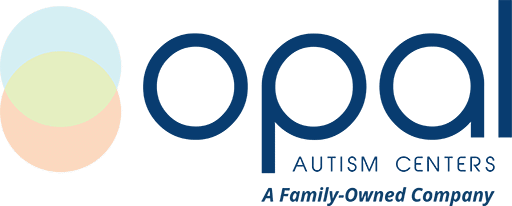You Have Questions.
We Have Answers.
General
ABA stands for Applied Behavior Analysis.
ABA therapy is an evidence-based treatment that focuses on improving behaviors critical to your child and family by teaching new skills to help your child reach their maximum potential.
ABA therapy targets challenging behaviors that may be getting in the way of your child’s development and improves those areas. Ultimately, we want to increase desired behaviors and decrease challenging or undesired behaviors. This is all done in a safe, ethical manner backed by decades of thorough research. Whether you realize it or not, you and everyone around you use the basic science of ABA. We are all connected to and influenced by our environment. It shapes our behavior through our positive and negative experiences and reactions.
Along with the well-documented benefits of ABA therapy, we have improved upon and adapted different strategies of ABA to increase the success of its methods. For parents, being familiar with the strategies and techniques of ABA allows you to feel confident in teaching your children new skills, allowing you to be more involved in their development. As a parent, it will increase your confidence, decrease stress, and lessen obstacles to your child’s healthy development. As you play this vital role in your child’s development, you’ll begin handling problem behaviors from your child more effectively. This opens up more avenues to integrate your child into different environments.
Plans are 100% individualized. Therapy intensity will vary as they are based on clinical necessity. However, typical comprehensive ABA programs start out at 25 hours per week. We always allow families to start at their comfort level, but also give recommendations for making optimal progress.
BCBA: A BCBA’s main role is to assess the individual’s behavior, design an appropriate treatment plan, and supervise the implementation of that plan. The BCBA will first conduct a functional behavior assessment (FBA) to determine the function of the problem behavior. Based on the results of the FBA, the BCBA will create a behavior intervention plan (BIP) that includes specific goals and strategies for addressing the identified problem behaviors.
The BCBA will then supervise the implementation of the BIP, which may include working with parents, teachers, and other caregivers to ensure that the intervention is implemented correctly and effectively. The BCBA will also monitor the individual’s progress and make adjustments to the intervention plan as necessary.
RBT: A Registered Behavior Technician (RBT) is a professional who has been trained and certified to assist in the implementation of behavior-analytic interventions. Opal’s RBTs spend about 20% of their 1:1 time with a client, being supervised by a Board Certified Behavior Analyst (BCBA). Many of our RBTs transition from other careers in child-development and often go on to become BCBAs themselves. While many organizations employ behavior technicians without the RBT credential, Opal is committed to investing in providing this certification to all of our direct line staff. We want to ensure your child is provided with the highest level of support from only the most qualified staff, no exceptions.
An RBT’s main role is to assist in the implementation of the treatment plan that has been designed by the BCBA. This can include working one-on-one with a client to teach new skills and reduce problem behaviors, as well as collecting data on the individual’s progress.
RBTs also provide support to parents, caregivers, and other professionals, helping them to understand and implement the intervention plan. They also are responsible for maintaining accurate records of the individual’s progress and reporting any concerns or issues to the BCBA.
Client Care Coordinator: A key member of your care team and the first person you likely will speak to is your client care coordinator. Opal’s client care coordinators help manage the care and support your child receives. We make every effort to provide you with your own dedicated client care professional who assists in coordinating services and resources, monitoring the intake process, and communicating with other members of your child’s care team. Your client care coordinator will act as an advocate and be your primary point of contact and will be there for you throughout your intake journey to help you understand your rights, options and responsibilities, and support you in getting the best possible care. They will work to ensure that you receive the highest quality of care and that your needs are met.
Insurance Experts: Opal’s insurance specialists are subject matter experts who are dedicated to providing guidance and advocating on your behalf when it comes to your child’s benefits. The insurance specialist will verify your child’s insurance coverage and benefits to ensure that each client is eligible for the treatments and procedures they intend to receive.
Services primarily take place in our bright and beautiful centers. Our bright and beautiful centers were carefully developed by expert clinicians and designed to model a preschool environment, encouraging school readiness alongside individualized ABA Therapy.
With carefully thought-out stations, children will learn through play in an engaging setting as they work to increase skills and socialize with peers. Our caregiver rooms offer a private and serene space for families to meet with their child’s BCBA as well as receive hands-on caregiver coaching. Our gross motor room, a client favorite, provides energy burning opportunities for littles to learn through movement and stay engaged. Clients can take refuge in our calming sensory room, get crafty in our creative room, and receive individualized outcome focused care in one of our early learner rooms. Group-centered lunch tables create the perfect social experience, while also preparing kiddos for the school setting.
It takes a village. Whether it is the lack of communication, the tantrums or the meltdowns, raising a child with autism can be challenging. You want to get it right and we can help. When you join the Opal Village, you receive training on critical skills that can guide you to calmer waters and help you find treasure in your child’s behavior. Opal’s parent training program sets out to improve functioning across environments, ensure generalization, reduce family stress and increase overall quality of life for caretakers and children alike. Most parent training programs occur about 1-2 hours per week and are hands-on.
Parents can drop off in the morning, and pick up in the afternoon, similar to a traditional daycare structure but with the added benefit of lower costs and talented staff who are trained to work with children on the spectrum.
Financial
We speak insurance at Opal! Following news of a significant diagnosis such as autism spectrum disorder, it is likely that the last things on your mind are copays and deductibles. We’ve taken the guesswork out of getting started with ABA. Your copay and deductible will vary based on who you have insurance with. Medicaid plans typically carry no patient responsibility. However, most commercial plans will carry some out of pocket costs. Here’s a list of commonly used insurance terms and definitions. For specific information on your payer, please reach out to them directly.
Premium: A monthly cost (sometimes split between pay periods) paid to the insurance company and often partially paid by the employer. Premiums are not applied to out-of-pocket costs.
Patient or beneficiary responsibility: The portion of costs of medical services that the beneficiary pays for before the insurance plan pays its portion.
Co-pay: A set rate you pay for some prescriptions, doctor visits, and other types of services. Not all plans have co-pays, and co-pays do not apply to all services. Co-pays do not typically count toward your deductible.
Co-insurance: A cost-sharing structure in which the insurance company pays a percentage of the care costs and the beneficiary is responsible for the remaining percentage of costs. These costs are usually applied after a deductible is met.
Deductible: A deductible is the amount you pay each year before your health plan begins to share in the cost of covered services. Some medical fees may or may not be included in the deductible.
Out-of-pocket maximum: Out-of-pocket maximum is the most you could pay for covered medical expenses in a year. Most co-pays will count toward your out-of-pocket maximum.
In-network benefits: Most insurance plans have a network of providers that meet the plan’s credential requirements and accept the plan’s reimbursement rates for services. Services from in-network providers are covered at a higher rate for the beneficiary than out-of-network providers.
Out-of-network providers: If a provider does not have a contract with your insurance plan, they’re considered out-of-network. Some plans have some out-of-network benefits, but the amount paid by the beneficiary is usually much higher. If there are no out-of-network benefits, the beneficiary may be responsible for the full price of the service. Providers may also charge additional out-of-network fees.
Preferred Provider Organization (PPO) plans: On a PPO plan, you generally pay less for in-network services, but you usually pay more for premiums. Many PPOs have some out-of-network benefits and a larger network of providers in a larger area. A referral is usually not necessary to see a specialist.
Health Maintenance Organization (HMO) plans: HMOs only cover providers that are in your plan’s network. If a beneficiary uses an out-of-network provider, the beneficiary will have to pay full price for the services, except in emergency situations. HMOs usually have localized networks (only in a certain area), and have lower cost premiums, but higher service costs for beneficiaries. HMOs also generally require a referral by a primary care doctor for any specialist visits.
Pre-authorization: Some plans require pre-authorization before agreeing to cover certain services. Most insurance plans require pre-authorization for ABA therapy services. Insurance companies also often require reauthorization after a certain time period in order to continue covering ABA therapy.






